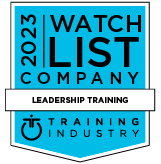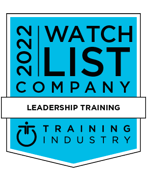The Real HERO for High-Performing Teams - Positive Psychological Capital

Contents
When we look at specifics in an organization's operations, we often look at the technical difference between engaged and disengaged employees as “human capital.” For those “number-people”, this quantifies how each worker contributes to the bottom line. As abstract as it seems, it accounts for a large amount of the variance in an organization’s performance.
Psychological research has allowed leaders to identify a connection between positive well-being and employee engagement/positive outcomes. To measure engagement and outcomes may seem like common sense, but they’re overlooked in strategic conversations in favor of more tangible metrics. “Number-people” will know exactly what these are…
There’s been a resurgence in a subfield of psychology, formerly used in clinical settings, to treat personal well-being. This field is aptly named Positive Psychology. This aims to reorient research on psychological health from mental illness to mental WELLNESS to treat the whole psyche, not just the symptoms.
With this renewed focus, there has followed several developments in research from an industrial-organizational lens. Most notably, Fred Luthans’ research has helped connect positive psychology constructs with desirable employee behaviors.
Now, if you’re one of our readers, chances are, you don’t need much convincing that an employee's experience at work makes all the difference in their performance. You’re probably more interested in HOW to approach these intangible concepts and make them work to mutually benefit employees and your organization.
That, in a sense, is the focus of positive psychological capital (Psy-cap) research: operationalizing how to define the healthy, positive psychological state of human capital and how it connects to positive work behaviors.
Thankfully, the research has turned that abstract definition into more tangible frameworks to focus leaders’ efforts where they matter most and nail the bottom line.
The HERO for Psychological Safety
The most universally accepted model for approaching positive psychological capital is called HERO. Hopefulness, (Self)-Efficacy, Resiliency, and Optimism.
This model explains the value of positive psychological health in the workplace and creates tangible metrics to demonstrate their efficacy to an organization.
You may be wondering how this differs from Psychological Safety? While both measure positive psychological states, and connects to desirable employee behaviors, the focus and scope of the research are very different.
Psychological Safety is a team-based measurement to understand how teams interact with one another and take social risks in discourse when collaborating. Positive psychological capital measures an individual and how they view their abilities in their role. This also takes Psychological Safety a step further, allowing leaders to care for teams by treating their individual, psychological needs.
Not All Heroes Wear Capes
Now, I’m sure there may be some skeptics who view this concept as touchy-feely nonsense. I’ll admit, that was my own knee-jerk reaction. But the model holds up to skepticism.
HERO makes this concept tangible and measurable. The HERO framework is the most widely validated and reinforced model for defining and measuring positive psychological capital.
The Psychological Capital Questionnaire (PCQ) measures these behaviors with 24 items – six per construct – and has undergone extensive psychometric analysis across multiple demographics.
By the numbers, if you improve psychological capital within your teams, you will see…
- Increased Job Satisfaction
- Increased Engagement
- Increased Organizational Commitment[i]
- Increased Job Performance[ii]
- Increased Intrinsic Motivation
- Increased Creativity [iii]
- Increased Employee Wellbeing
- Reduced Employee Stress[iv]
- Reduced Turnover[v]
- Reduced Absenteeism[vi]
These are all often considered as fixed personality traits. But they’re dispositional, and can therefore, change. People aren’t born optimists or pessimists. It’s an outlook that’s switched by learning to approach challenges with a different set of thinking.
Hopefulness
Imagine, for a moment, how you would approach your job if you felt there was no hope for success. How hard would you try to solve everyday issues in your role? How much motivation would you need to tackle your morning tasks?
This is an extreme example, but if you imagine complete despair at one end of the spectrum, and beaming optimism at the other, think about where you and your team might sit on this spectrum.
Hope consists of two main components: agency and pathways. In other words, your willpower to achieve goals, and your ability to chart different paths – “way power” - toward them. This specific construct has been measured through the 12-part Adult Hope Scale (AHS) , which measures “pathway” and “agency” thinking among adults.
When you find multiple routes to a solution, it assures you there are multiple ways to succeed at one goal. If one solution encounters issues, you have other pathways to switch to. There’s less chance of failure if there are multiple ways to succeed. Encourage this hopeful thinking as much as possible to ensure that everyone on your team can choose pathways that work for them, allowing them to adapt to volatile environments, and round out their strategies with fail-safes for overcoming obstacles.
(Self)-Efficacy
This construct refers to a teammate’s self-belief when dealing with various situations. Here’s another extreme example. Imagine a poor soul who doesn’t trust their abilities at all. They look for help at the first sign of trouble. Every daily challenge seems insurmountable unless they have detailed instructions on how to overcome it.
On the other hand, imagine someone who’s confident in their abilities. They have no problems troubleshooting an issue. They break down big hairy goals into smaller tangible goals. They pride themselves on their self-reliance.
Many leaders want to rely on our team to be like the latter and handle their responsibilities autonomously. But oversight requires a lot of time and attention and keeps leaders from leading more strategically. Not to mention, no one should feel incapable in their job.
However, beyond a certain point, if teammates still feel worried approaching certain tasks, you may want to analyze your approach to continued development.
To our next point: how do you improve self-efficacy? Beyond just “it depends on the context”, improving self-efficacy boils down to a balance of confidence and continued development. It’s knowing that you can eventually arrive at a solution because you know that when you work through something long enough, you come up with an answer. It involves using past experiences in problem-solving and knowing that, if you don’t have the answer now, you will eventually.
Our avid readers might recognize this type of thinking as a Growth Mindset. The power of “yet”.
Even if you can’t do something now, if you work hard at it, you’ll eventually get there. That attitude of self-reliance will get you much further in troubleshooting those challenges we all face at work. This will keep your team from seeking counsel at every hurdle they face to help them crave the increased autonomy that comes with self-efficacy.
How to Improve Self-Efficacy in Your Teams
Firstly, the best way to make employees feel like they’re capable in their role is to reinforce that idea, wherever possible, through recognition and feedback. Look for opportunities to celebrate your team’s wins. If you’re providing more positive to constructive feedback (we recommend at least a 3:1 ratio of positive to constructive), your team will have more data points on their successes to pull from when facing uncertainty. Did they think outside the box to troubleshoot an issue? Celebrate it! They’re more likely to internalize that for future obstacles if you do.
Another key behavior to combat defeatist mindsets, and reinforce growth mindsets, is continued development and training. If your team feels they’re constantly improving their abilities and expanding their skillset, it's easier for them to believe that all their challenges can be accomplished with enough time and effort. Make sure there are continued efforts to create training plans for each employee and check in on their progress on a regular basis. Don’t let it fall to the bottom of the pile!
Finally, a key behavior in self-reliant employees is the ability to break down large intangible goals into smaller, more manageable ones. SMART objectives are a great, well-known framework for dissolving smaller goals to create lots of wins on the way toward a larger goal.
Resiliency
Resiliency is simply defined as a positive way of coping with adversity or distress. Organizationally, this reflects a teammate’s ability to recover from stress, conflict, failure, change, or increases in responsibility. The landscape of most workplaces is in constant flux, now more than ever. Oftentimes, an organization's success boils down to teams’ adaptability and resilience.
While this scale may be easier to observe, let's imagine a behavioral scale. On the low end of the spectrum, we expect these individuals to react poorly to change. They’re slow to adapt. They also don’t deal well with conflict and failure, they’re slow to recover and internalize much of it, and it can shake their confidence when approaching future challenges.
On the other end of the spectrum, we have individuals who are extremely adaptable. They thrive under pressure and aren’t shaken by conflict. Their confidence translates to reassurance in the face of uncertainty. They learn from their failures, but don’t dwell on them.
Without sounding like a broken record here, a growth mindset is instrumental in pulling these behaviors from our team. Reframing failed challenges as learning opportunities keeps your team from dwelling too much on the shortcomings to focus more on what can be learned when they encounter a similar scenario in future.
Like the other constructs, by finding more than one way to tackle any issue, this will go a long way in helping teams overcome everyday obstacles. The most universal framework for applying positive psy-cap is appropriately named ADAPT, which stands for:
Attitude: The pre-set attitude toward the situation.
Definition: Identifying the problem and setting realistic goals to reach a solution.
Alternatives: Exploring additional approaches to the issue.
Predict: Forecasting likely obstacles and plan.
Test: Testing out your solution before deploying it at full scale.
Optimism
From the psychological capital lens, optimism can be viewed from dispositional and explanatory angles of behavior. Dispositional optimism is when someone has overall positive expectations for the future, with explanatory optimism referring to how an individual rationalizes the explanations of an event. Are they quick to jump to a negative conclusion or search for alternative positive ones?
It’s time to visualize the behaviorally anchored spectrum for this construct. On the lower end, we expect to see those who are quick to gravitate toward negative potential. They’re highly risk averse. They gravitate toward negative explanations of unclear circumstances. On the other end of this spectrum are those with more positive outlooks who seek to innovate and improve current methods in uncertain times.
The HERO Spectrum in Full Flight
Now think of you and your team; where on the spectrum do you reside? How easily can you find the silver lining?




While you want your team to be realistic when evaluating your circumstances, those with negatively anchored thinking will only focus on the negatives. Imagine your sales team brings you a huge client. They have the potential scope for one of your biggest projects. A pessimist may lean toward the arguments of: “We’ve never scaled at this level. What if it doesn’t work? We could lose their business forever. Should we hold off until we’re sure?”
Whereas an optimist will approach the potential of taking on a client like this: “This will be a huge win for our bottom line! We can handle this. We’ve been preparing for an opportunity like this. If we nail this, it could open the door for a new class of clients. We’ll figure it out.”
Strategically, you’ll want a balance depending on the scenario. But the optimistic mindset is a lot more psychologically healthy. Pessimism drains motivation, it increases burnout, and prevents your team from taking on new challenges. Open optimism in your team. Be that voice of opportunity when it’s missing.
These constructs can often influence each other. Optimism can influence how a teammate expresses hope and their perceptions of their efficacy. When you move the needle on one of these constructs, you potentially move the needle on all of them. When approaching positive psy-cap, it's best to take a holistic approach and focus on all these constructs together, as they’re often present in the same scenarios. Use this model, and the research on the constructs, to identify the weaker points in your team’s (and your own) psyche so you can help reinforce them, build their self-esteem, and with it, their ability to navigate challenges, change, and volatility for a high-performing, effective culture.
[i] Luthans, F., & Youssef, C. M. (2007). Emerging positive organizational behavior. Journal of management, 33(3), 321-349.
[ii] Luthans, F., & Youssef, C. M. (2007). Emerging positive organizational behavior. Journal of management, 33(3), 321-349.
[iii] Gagné, M., & Deci, E. L. (2005). Self‐determination theory and work motivation. Journal of Organizational Behavior, 26(4), 331-362.
[iv] Youssef-Morgan, C. M., & Luthans, F. (2015). Psychological capital and well-being. Stress and Health, 31(3), 180-188.
[v] Avey, J. B., Luthans, F., & Jensen, S. M. (2009). Psychological capital: A positive resource for combating employee stress and turnover. Human Resource Management, 48(5), 677-693.
[vi] Avey, J. B., Luthans, F., & Jensen, S. M. (2009). Psychological capital: A positive resource for combating employee stress and turnover. Human Resource Management, 48(5), 677-693.
[vii] Luthans, F., & Youssef-Morgan, C. M. (2017). Psychological capital and beyond. Oxford University Press.
Read On
Insights

Subscribe to Our Monthly Newsletter!
For managers and talent professionals who truly believe in putting people first, the CARE to Win blog is your gateway to the latest insights on human-centric leadership. Join us as we champion the people first movement.
Need some time apart? Are we emailing you too often? Just give us your feedback, and we promise we’ll respond. We really do care. And if it’s still too much, just unsubscribe. It’s cool.
 Ryan Aguiar
Ryan Aguiar



